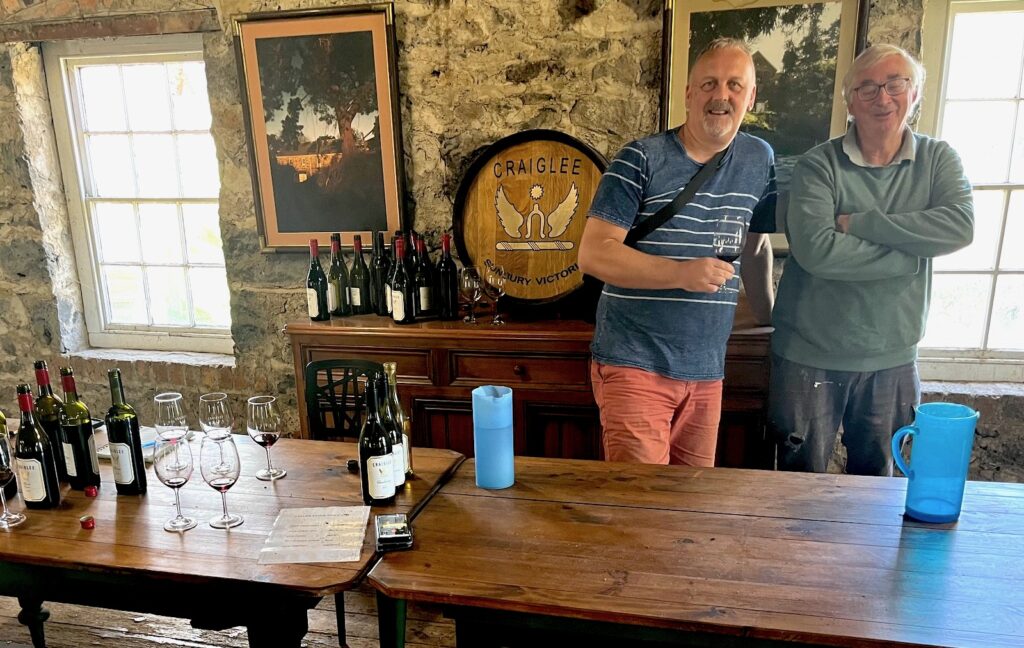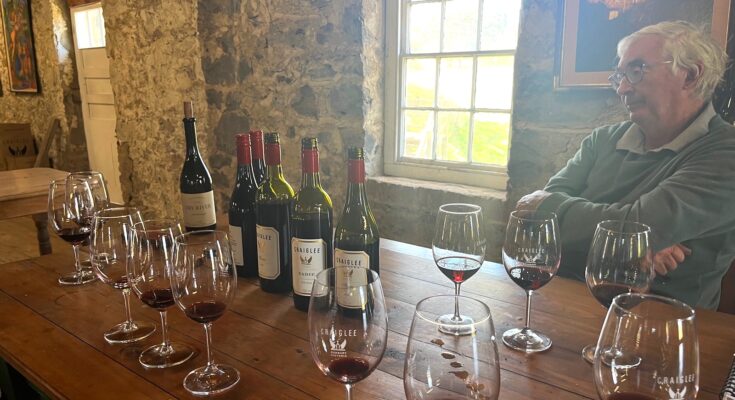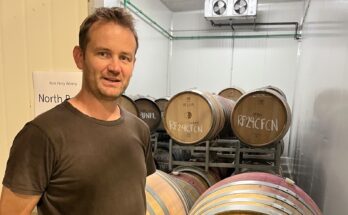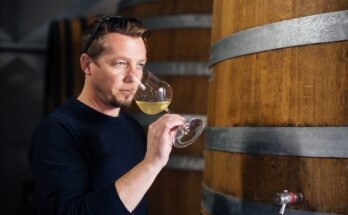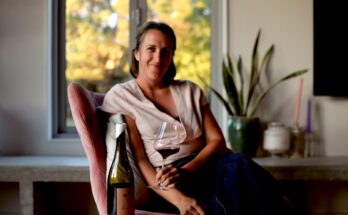I’m in Sunbury on the outskirts of Melbourne – in fact the place I’m visiting – Craiglee – is slowly being encircled by housing subdivisions. The original, beautiful building was a winery – built in 1868, after vineyards planted in 1863, and in use for the first vintage. They made wine in the building until 1928. Pat Carmody is the owner and vigneron. They have Syrah, Cabernet and some Chardonnay and Viognier. One of our group recalls some Pinot Noir – from around fifteen years ago. Pat says he last made Pinot in 2009 – “I haven’t got a big enough ego to make Pinot”.
For Australia, Sunbury is quite cool climate. When you come out on the western plains, you wouldn’t think that, but there seems to be more air movement up the valley from the bay. They sit on Jackson’s Creek which eventually becomes one of the main rivers into Melbourne. It’s almost Sonoma-like – they get misty mornings – and botrytis! Mornington Peninsula has finished picking when we arrive, and Yarra Valley has almost finished. Pat and his wife run the whole show at Craiglee – the only people they employ are the pickers.
The winery building is protected – it’s a Heritage Victoria building. I’ve heard from colleagues who have visited before, about a story from when the Government declared all of the land, one hundred metres back from the creek – including the buildings as “frog habitat”.
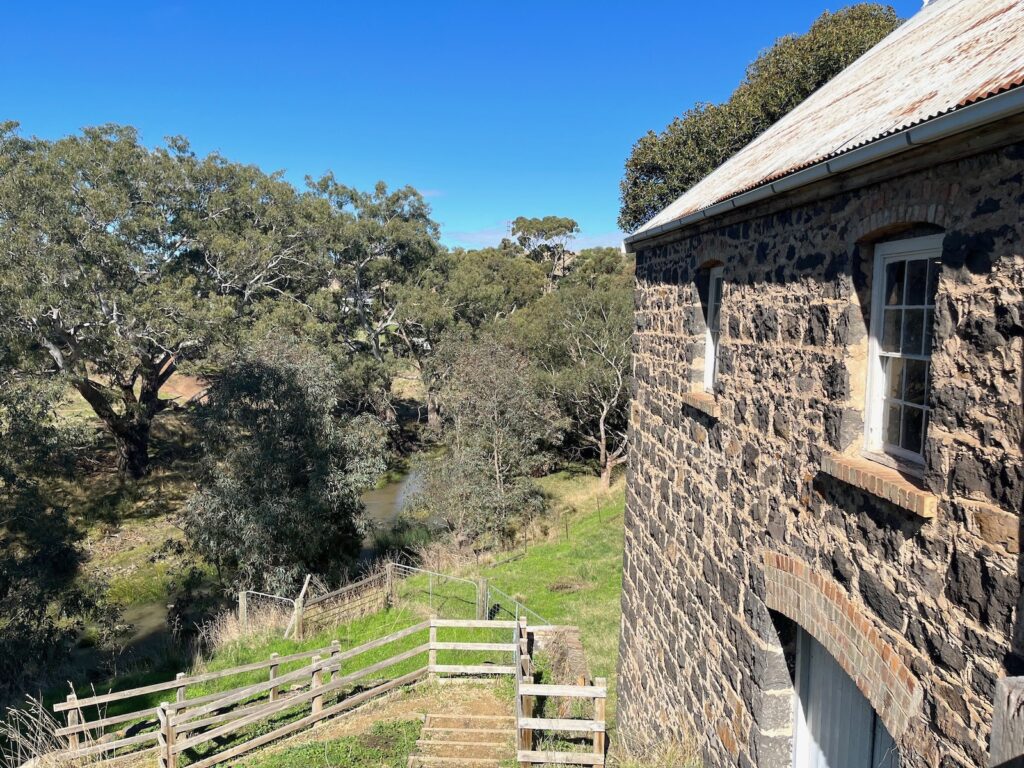
Pat Carmody: I asked the public service at the time “Which part of the building would they like to live in – do they need a frog door? Of course they never actually find that the frogs are there – they ‘model it’. Instead of saying ‘this is a piece of land and you’re looking after it – how do we help you?’ they come around and tell you ‘you can’t touch the trees or you’ll get a $50,000 fine’. I explain to these people that we’ve been on the land for sixty years, and people before that for a hundred years… and we’re quite proud of our trees.
For a vineyard like this to survive – and I don’t buy fruit – is if it has a restaurant or something. I always said that if you put a restaurant on this slope here and people are looking at magnificent scenery and old gum trees and a waterway – that would make this potentially sustainable. So, keep this in private hands, and it is being maintained… but the community has an open space to come into. This town will be 100,000 people – and you can built houses on 300 square metre blocks, but they make a fuss over somewhere like this? I don’t understand the logic of it – you should be able to have a sensible discussion, rather than saying ‘this is the law and that’s it’.
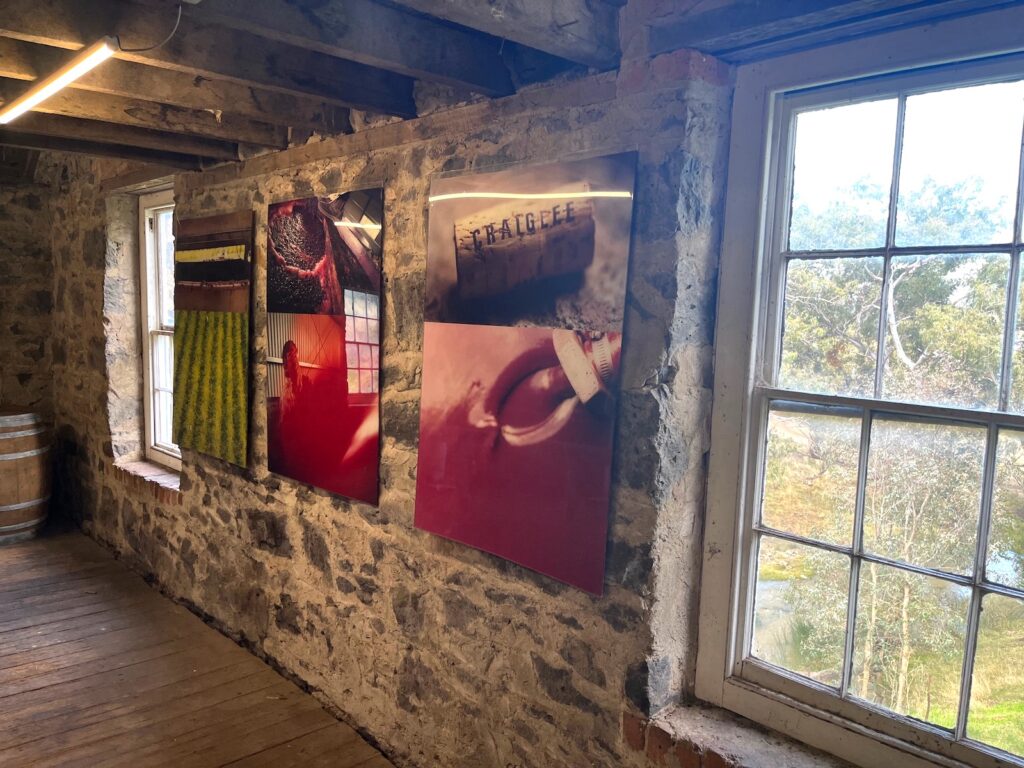
Pat asks a bit about my background, and what I do in wine – we have a brief discussion about awarding scores to wines when reviewing, and the inevitable question of the ‘perfect wine’ – the 100/100 score, comes up.
PC: With our wines, at no point do I say ‘that’s a 100-point wine’. I’ll just say it is a good wine from that year – and reflective of the year. Sometimes you can get a shit of a year, and you make an acceptable wine. Compared to when conditions are perfect in a year, and the village idiot could have made a good wine. It might never be a top wine, but the fact that you’ve made an acceptable wine… it’s like this year. You look outside and think ‘it’s cool, it’s late – the alcohols will be 12.5 maybe… but it is reflective of the vintage.
WineFolio: This 2021 Chardonnay is superb – classic, elegant and balanced. What do you make of ‘trends’ in Chardonnay in particular?
PC: There’s a lot of fashion in winemaking. And it isn’t necessarily reasoned fashion. I pick the fruit as ripe as I want it to be, then barrel-ferment it. No malo, and 20% new oak – all french, sitting on lees with a bit of batonnage. I want chardonnays that can age a little bit. There are techniques thrown at chardonnays that I don’t think help their ageing capacity. I suspect that with winemakers – if you could do seven techniques with Chardonnay and the next bloke could only do six – then you got the job! I think people forget that they’re making a foodstuff. It’s meant to be a nice drink – that’s all.
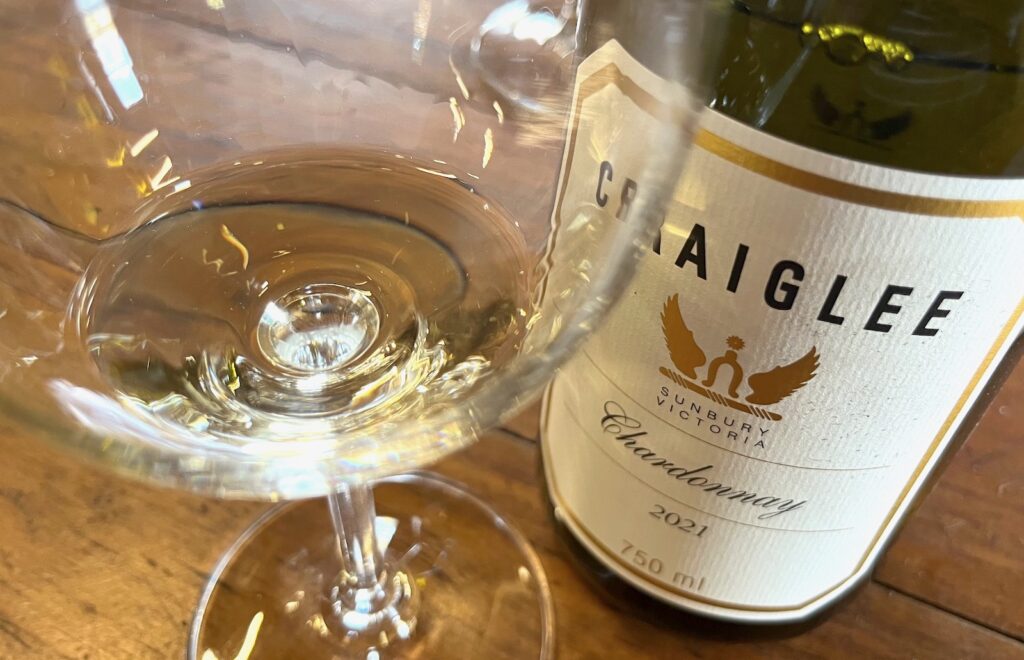
WF: I’m stunned that you’ll let us try, not just that current vintage but a 2011, and now a 1994. I’m amazed – that someone will show a visiting journalist from overseas a wine of such vintage! I get some lovely fruit tannin, phenolic character right through all of these vintages.
PC: A bit of apricot kernel and phenolics doesn’t do the wine any harm. It gives a bit of length to wines.
WF: For me, it’s not all about power or concentration. I question whether I’d be confident about a French Chardonnay that was thirty years old. And of course, there was the problems of premox that came after that, and cork problems everywhere. When did you made the move away from corks?
PC: I shifted to diam about 2005 and then to screwcap in 2012. The chardonnays I did under screwcap in ’07. I wasn’t sure what the capacity would be for diam long-term. Also, I sulphur the wines quite quickly after primary ferment these days – just to retain freshness as much as anything. During harvest we do two press loads each day. I crush the fruit but I put stalks back in, and I do a whole-bunch pressing cycle – about a three hour cycle. And that’s principally because I trying to not break up the skins, and I get my solids down to about one or two percent. I settle them overnight and then straight to barrel.
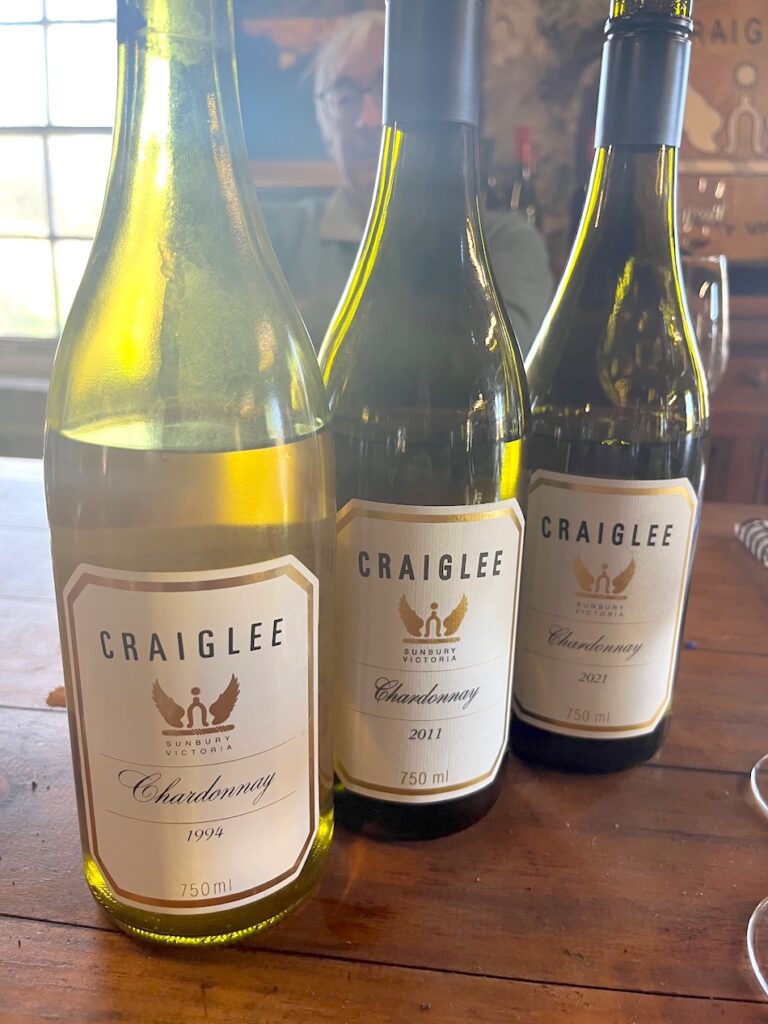
If you do a normal pressing cycle you get too much solids. I’m not a particular fan of high solids wines. Giaconda probably started it in Australia. And David Bicknell followed it up by adding solids back in – that’s my understanding of his winemaking. I make it from what I think I see in the fruit, and that’s all. I de-stem everything and I struggle to understand what the ‘whole-bunch’ thing is about.
WF: How does your Cabernet Sauvignon fit into the picture?
PC: I class Cabernet as an afterthought. This is a Shiraz vineyard. It’s as simple as that. It’s been a Shiraz vineyard since the 1860’s. Hermitage or Shiraz – whatever you want to call it. They had ‘Miller’s Burgundy’ which is Pinot Meunier. And Gouais – a parent of Chardonnay which is an obscure white varietal. It’s still grown in Australia by Bill Chambers. And they had Riesling.
My parents had bought the place in 1960 anticipating retiring from Northern Victoria – cockies – and my father was a chronic asthmatic and couldn’t handle grain dust. My Mother had wanted to live in Melbourne, and this was somehow the compromise. In 1972 a whole lot of bottles of Shiraz from this vineyard – from 1872 – were opened. John Brown came out and said to us ‘You should replant this vineyard – because of the history of it’. My Father wasn’t interested, but in 1975 we lost a heap of sheep over Easter weekend which broke Dad’s heart. Now, I was doing Agricultural Science – and sheep reproduction and nutrition was my speciality. And being a 23-year old smart arse, I said ‘let’s replant the vineyard – dogs won’t eat vines!’ So in 1976 we did replant it.
We had a local – Murray Clayton – who was a Sepps Viticulturalist, so he’d seen all the old Sepps wines – the Chalambars and the Moyston Claret and those sorts of things. He’d tried the old wine from here and had a really good knowledge of the Victorian regions. He said ‘because this has produced Shiraz for sixty years, you have to plant that – don’t worry about Cabernet. And if you want a white, plant Chardonnay’. In 1975 there wasn’t that much Chardonnay around.
WF: But you do have Cabernet?
PC: In the front paddock, which was a really shitty piece of soil. Mostly what we have is river sand from old river flats. We had Cabernet down the bottom but they were the wrong clones, so I pulled it out and planted it on the other side. It’s a minor thing. It was supposed to be pulled out last year, but the bloke never turned up!
The Shiraz is the oldest vines, so I think it is richer and fuller. I also think it is the best site on the property, which is why we separated them. And the Eadie is slightly more linear, tougher and a bit more tannic. It’s a different clone and it is never quite as generous. The Viognier is there because it has got the same tannin structure, but it softens it. Caro’s used to take my wines in New Zealand, but they stopped and they told me that what people wanted from Australia was that Barossa style – all ripe and juicy.
WF: I’m a bit of a tannin fan, and that middle one is so precocious. The tannin is heroic. There’s a little bit of reduction – but I like that. It adds something. And it is really complex – sinewy and long.
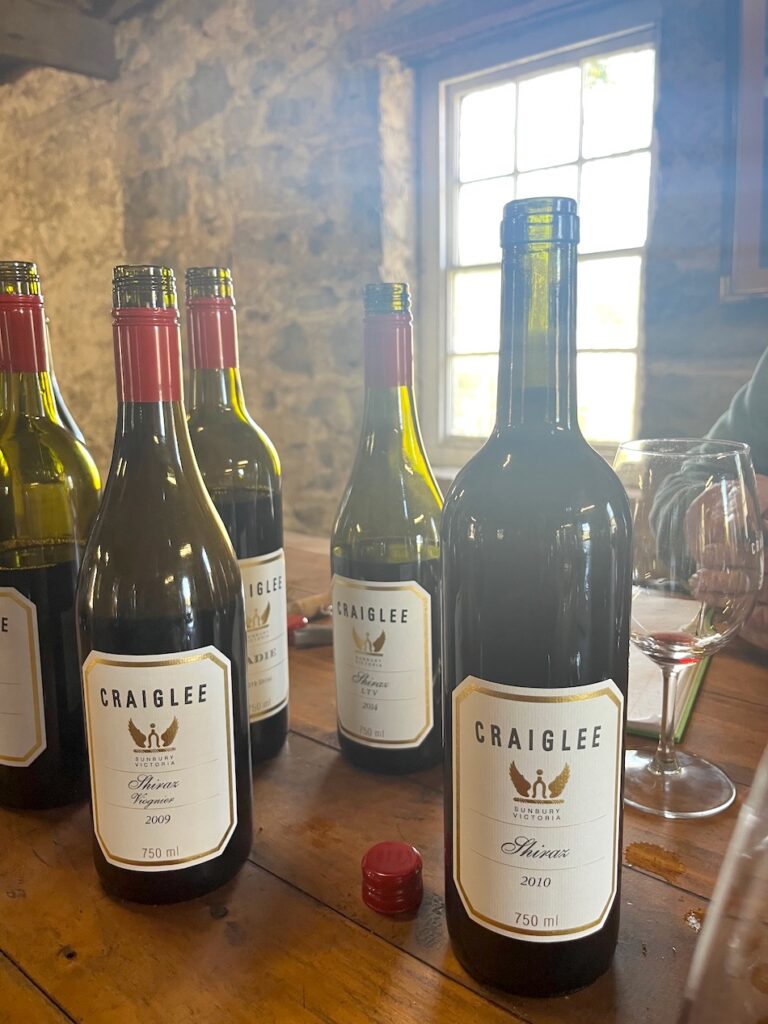
PC: What fascinates me – and I’ve made twelve years of Viognier – is it is the same tannins and yet they disappear. It is 3% Viognier, and I don’t want more than that in it. I’m the winemaker but I don’t know how it works! More than that and it is too overt. There’s no stems in this – it is all de-stemmed fruit. I think there’s enough tannin in these not to worry about any more. They’re not on extended macerations or anything. The reds are plunged or pumped over – depending on the geriatric who’s got to do the plunging – especially if it’s ten o’clock at night. In fact I’ve decided that all the wines this year are getting pump overs – at my age I’m not going to be stupid.
WF: Well, my rule no.1 is ‘delicious’. And how you get to delicious is often involving balance – these are beautifully balanced wines. You did a Reserve a couple of years ago – in 2017?
PC: I spoke to Phillip Jones from Bass Phillip, who I’ve known for a long time, and he said ‘you’re an idiot for not charging more for your wines’ He said pick three barrels out – which sort of offends me because it should be in the blend! It was just reminding people that I was there! I didn’t see it as dramatically different. It was a bit finer, and it has a tiny bit more new oak, but it was a statement of “I’ve been around a while”. This is genuine old vine, from what is a very special site in terms of growing Shiraz. That site has produced a wine that lasts a hundred years then it is, as Brian Crozier would describe it, a ‘distinguished site’.
WF: When you make good wines from hard years, do you look back at those a few years after and think ‘I did a good job there’?
PC: No, I don’t think that, I just think how lucky I was that it’s still alright. You’re just trying to make something that reflects the vintage. I’ve never worked anywhere else. I just try not to mess it up.
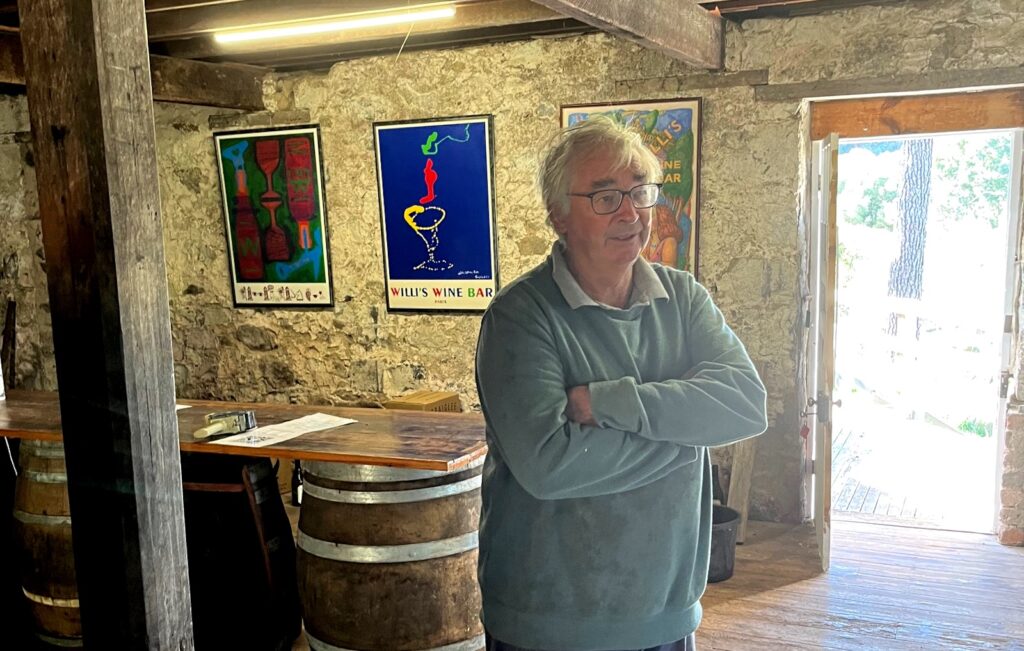
WF: Do you have a legacy plan?
PC: No. What’s a legacy? My kids aren’t interested. This is my 45th vintage coming. I don’t think I can do any more for the place. I was talking to someone the other day, and probably in what I would describe as ‘Southern Victoria’ – I’m probably the longest-serving winemaker now. Ron Laughton has been out of it for a few years now, so I’ve gone past him. Phillip Jones has had vintages later than me. Lou started to make his wines later than me. I said to my wife that I might try to get to fifty vintages. Huon Hooke did the top wineries in Australia a couple of weeks ago, in The Age. We didn’t feature in the Top 350, so I don’t think I’ve got anything going for me at all!
John Brown said to me, that due to the longevity of this wine, and the fact that the previous people kept bottles in the cellar for someone to open at a hundred years of age is pretty amazing. He said – you have to do what every other small winery doesn’t do – put away stock. So that when you open something like that (picks up the ’94 Chardonnay) – it’s not the last bottle. It’s a library that no-one else will have. I went to the Rhône in 1993 and I remember going to Jaboulets, and Gerard said to me “Let’s try all the current releases”, and I went back the next day so he invited me to try La Chapelle back into the ‘60s.
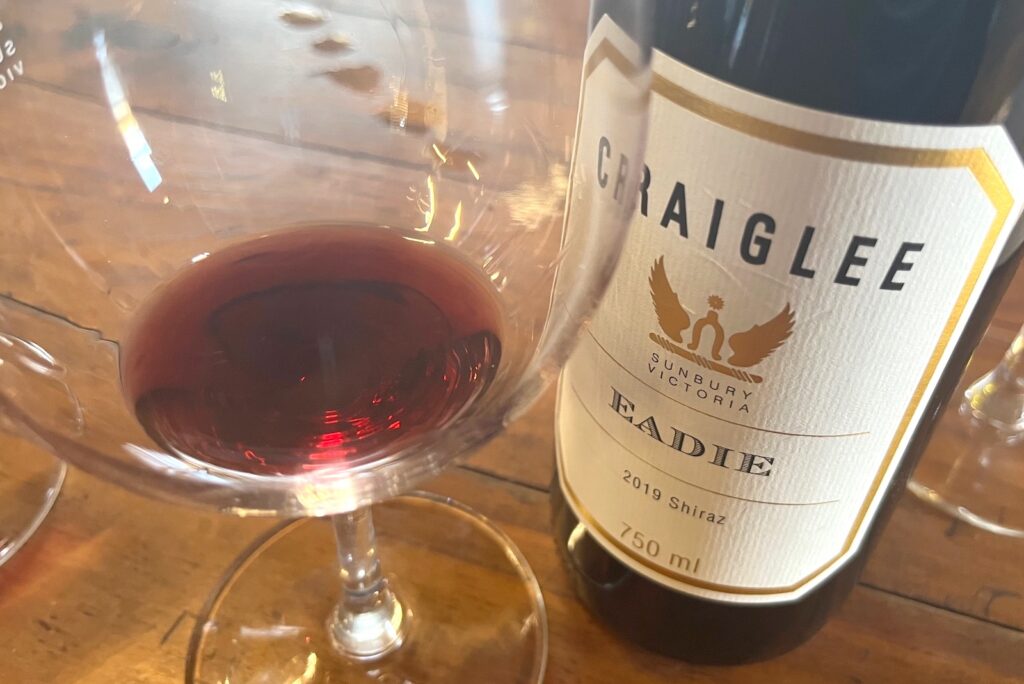
WF: That’s great advice. Is there any one thing that you’ve done, that you wish you hadn’t done?
PC: I’m pleased I got rid of cork, because I really disliked the variation. A long-term customer brought back a bottle a couple of weeks ago – a 2002. So, with screwcap, no-one’s really got any excuse. When I look at rieslings, and ones under cork that are past it… and then I see rieslings under screwcap that are still as fresh as a daisy – I’m happy for them to evolve as long as they like. You judge don’t you? Do you think shows are performing any role at the moment?
WF: I do wonder how long some of those more ‘traditional’ shows will last. You’ve got things like the Decanter Magazine Awards, where the show is now bigger – and by that I mean in terms of value, and income – than the magazine. Publishing is not worth doing any more – the cost of printing and paper is astonishing now. But if you can get wine producers to pay to enter wine into a competition – or even just your own reviews or judging – and you’re getting thousand of entries and samples – then that is a revenue stream.
I also worry about the future of fine wine – that it is seen as something that your Grandad used to drink. Either it becomes unattainable, because millionaires just buy it all to show off to their friends, and the price becomes ridiculous; or young people just don’t ‘get it’.
PC: Well they drink natural wine, gin and craft beers. And there’s nothing like buying half a dozen of something and seeing how it evolves. My son lives in Brunswick, so it’s very natural winemaking stuff. He was at a restaurant with his partner one night, and he just wanted a glass of wine. The somm was ‘you’ve got to try this and that’. In the end he said ‘just bring me the most un-natural wine you’ve got on your list’.
WF: People want instant gratification now. No-one wants to wait for anything. TV shows have become popular again now, because you can watch all twelve episodes at once, online. There’s no tuning in every week and anticipating what happens next. You can binge the whole lot at once. And that’s what even wine producers like yourself now have to deal with.
